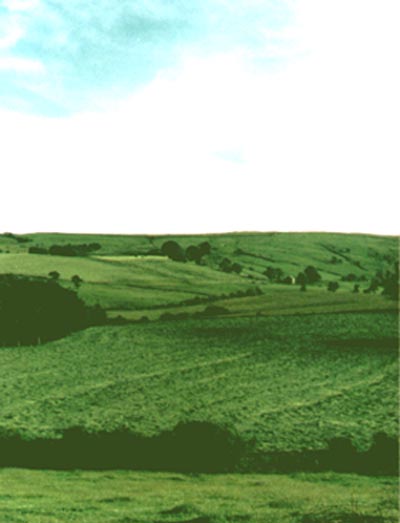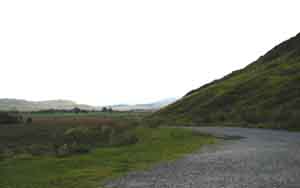Haytime and Harvest
Haytime

Haytime is one of the most important jobs of the summer. While the grass is growing tall, it must be saved and stored, so that the stock can eat it and thrive during the next winter.
Long days and hard work
In Cumbria in summer, the sun rises at 4am and sets after 10pm. That's a long day's work, but at least the men who worked with horses got some rest when it went dark. On modern farms work can go on all night by the light of tractor headlights.
Haytime is a job for July or August - sometimes later if the weather was poor earlier in the year. You just have to get it done before harvest. And fit it in with clipping the sheep.
Mowing with the ley (scythe)
John Gate: "That long blade, it was for the hay."
David Trotter: "Ours weren't as long as that. And if there was a banking that you couldn't get on with a horse, it was to mow wi't ley, yeah, you had to mow that, it all had to be got."
John Gate: "Did you know Jack Taylor, in Mungrisdale? He was a great man with a scythe. He used to say, it was just a waste o'time going to lait horses in to mow hay. He wad just go wi't scythe. He could mow!"

Looking from Dalemain Estates' Mosedale Moss towards Mungrisdale, Troutbeck and Great Mell Fell.
Working the hay
The mown grass had to be turned regularly. The whole family and its hired men would turn out to work, flipping the mown rows of grass over with hay-forks or rakes to allow the air and sun to dry it. Ideally there would be a small area of grass newly mown, another halfway through drying, and another ready to cart off, so that whatever the weather did, there would be some grass saved.
In the 1930s and 40s horsedrawn machinery eased the task of turning the grass.
David Trotter talking about haytime
David Trotter:"It used to be rowed up with a side delivery rake, horse drawn, you would go round, that would be your job, you would work the hay - up in a morning, mow the hay, mow till about six o'clock (a.m.), then you would come home and milk, then you worked the hay all day. On a bed that had been mown the day before, your side delivery rake, that used to come round and sweep it, then you could take two rakes out, on each beam, and then it used to turn each swathe over, just turned it over so the wet side got the air. Then it would lie in the sun for that day, and the next day you would go in with a scaler, that used to pick it up and throw it back out and at the back side there was like a big screen and it threw it over and dropped it back, more or less where it had come from but it had turned it over and scaled it."